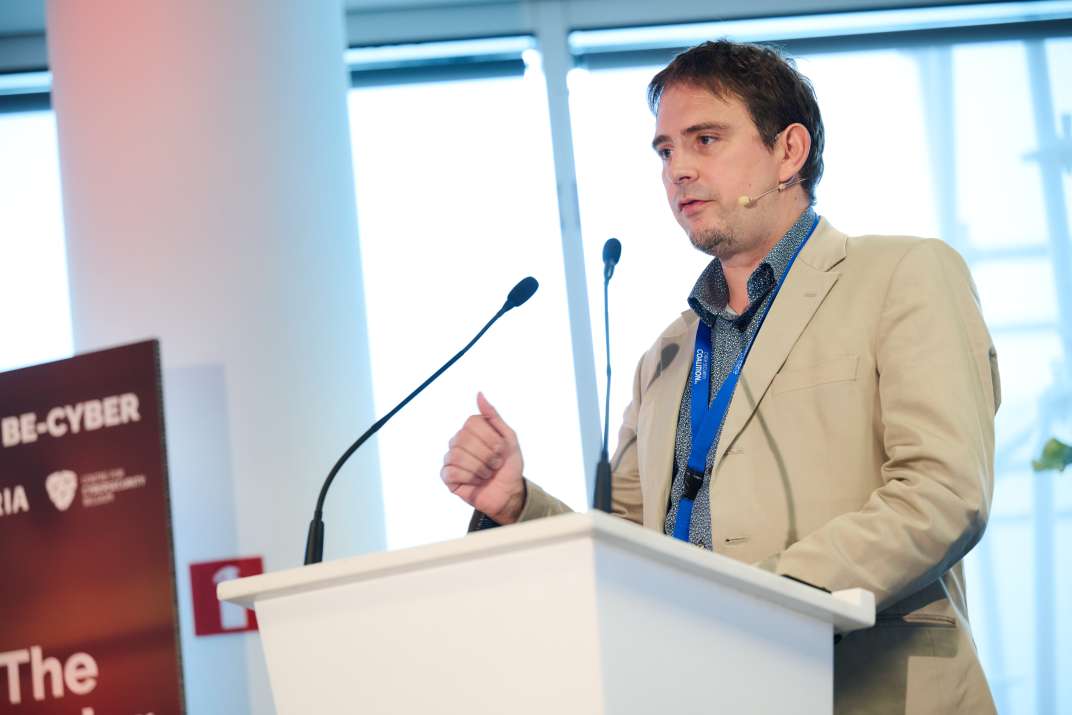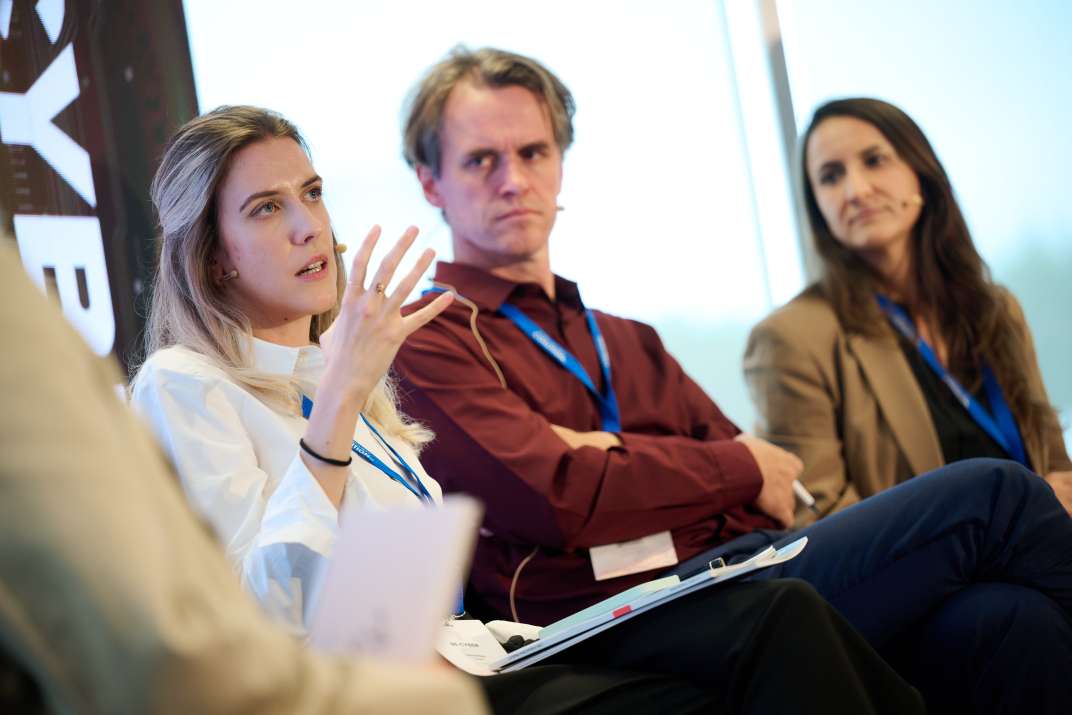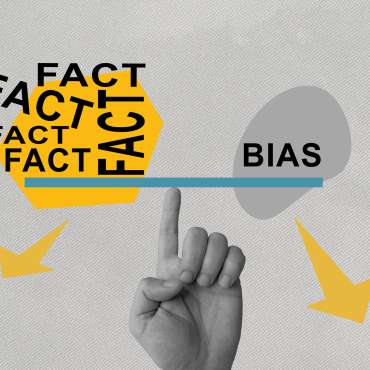“Although we are all aware of it, even within the cybersecurity sector we still underestimate the power and importance of disinformation. It affects the very fabric of our societal model, deep within our souls,” Booms immediately set the tone for the conversation. “Its ultimate goal is to sow doubt. We must collectively realise that the parties behind this have over 600 million euros invested in this effort. Clearly, they deem it extremely important.”
“Like throwing spaghetti at the wall”
While establishing a causal link between the spread of disinformation and its consequences is scientifically challenging, its impact is undeniably present in our daily reality. “When people are consistently exposed to certain viewpoints, they begin to shift in that direction,” Hajdu explained. “It’s crucial to realise that these campaigns always exploit existing weaknesses or fault lines within society, which are then further exacerbated. In practice, it’s not so much about foreign narratives being introduced but rather about narratives that already exist, which they try to push into the mainstream,” added Marin Garcia.
“What happens can best be compared to throwing cooked spaghetti at the wall. You know only some of it will stick, but you can never predict in advance which strands they will be. The same goes for disinformation campaigns. You can’t predict in advance what will stick and which opinions will shift as a result. That’s what makes it so difficult to combat, and thus so appealing to those who seek to exploit it,” said Van Aelst.
The success of Foreign Information Manipulation and Interference (FINI) therefore depends on how well the information being spread – whether true or false – resonates. In other words, how well it aligns with existing societal fault lines. “That’s why these campaigns focus primarily on society’s so-called fringe groups, which are already marginalised and have lower trust in the government, making them more susceptible,” Van Aelst continued.
No quick fixes
A better understanding of how disinformation campaigns work also means recognising that there are no quick fixes. Rather, fighting them is a long-term effort requiring many combined measures. Above all, trust in traditional gatekeepers such as journalists and governmental bodies must be reinforced, especially among the fringe groups. “We must also become more assertive in blocking disinformation entering our networks. This is the basis of the European Commission’s new strategy on this issue, which builds upon the Digital Services Act,” Garcia explained.
A concrete example of this more assertive approach, which was collectively praised by the panel, is the ban on political advertisements on Meta platforms: a particularly relevant measure for Belgium, where such advertisements were a common practice until recently. “Belgium is reasonably well-equipped in this regard, despite having significant and historically deep-rooted fault lines. This is evidenced, for example, by the strong trust people still have in public broadcasters,” said Van Aelst, who, with his research team, developed a dashboard aimed at mapping disinformation vulnerability across European countries for policymakers.
Based on this extensive research, Van Aelst and his team concluded, with unanimous agreement from the rest of the panel, that there’s no need for despair in Europe’s fight against disinformation. “There’s a sense of doom surrounding this issue, but in practice, we have proven to be pretty resilient. Look at the recent elections in Moldova. Despite large-scale disinformation campaigns from Russia, the pro-Russian candidate did not emerge as the winner,” Hajdu explained. “So, we shouldn’t overestimate the current impact, as it can backfire. By doing so, people may become suspicious of governments, which is exactly what the aggressors want,” Van Aelst concluded.
On the picture: Peter Booms, Dominika Hajdu, Peter Van Aelst and Beatriz Marin Garcia.









